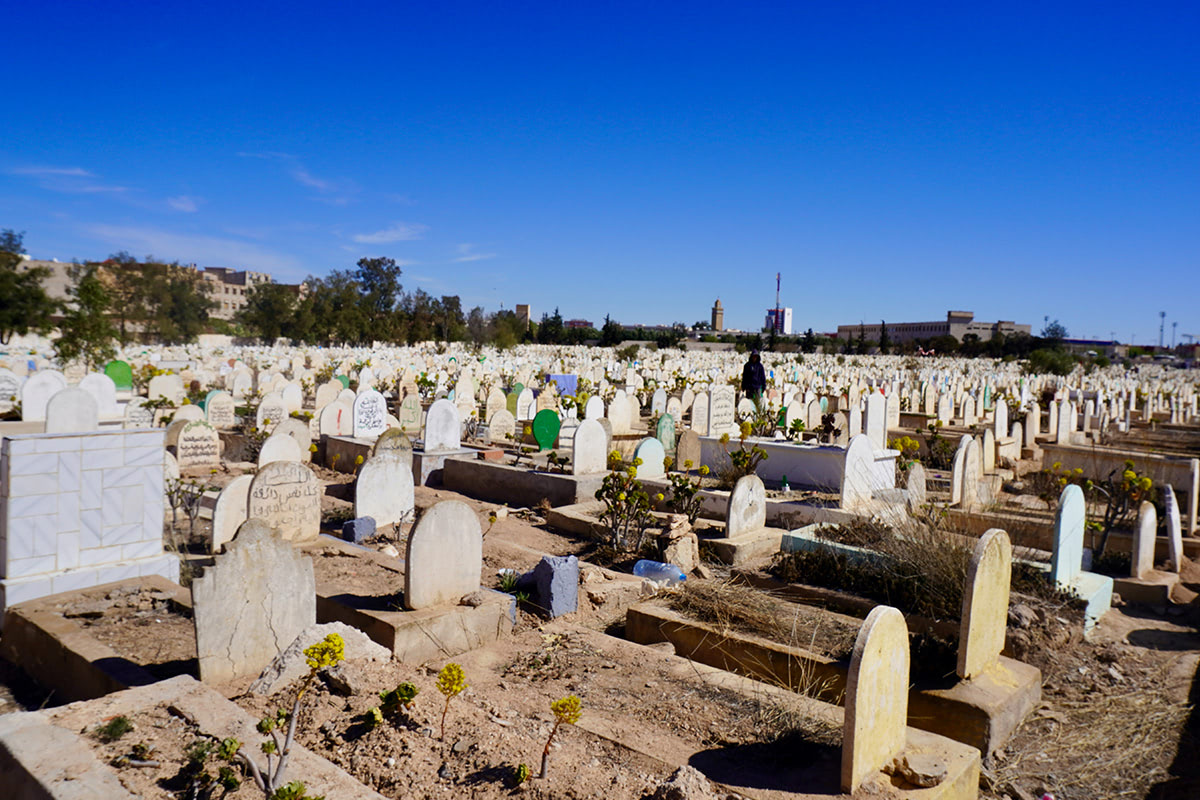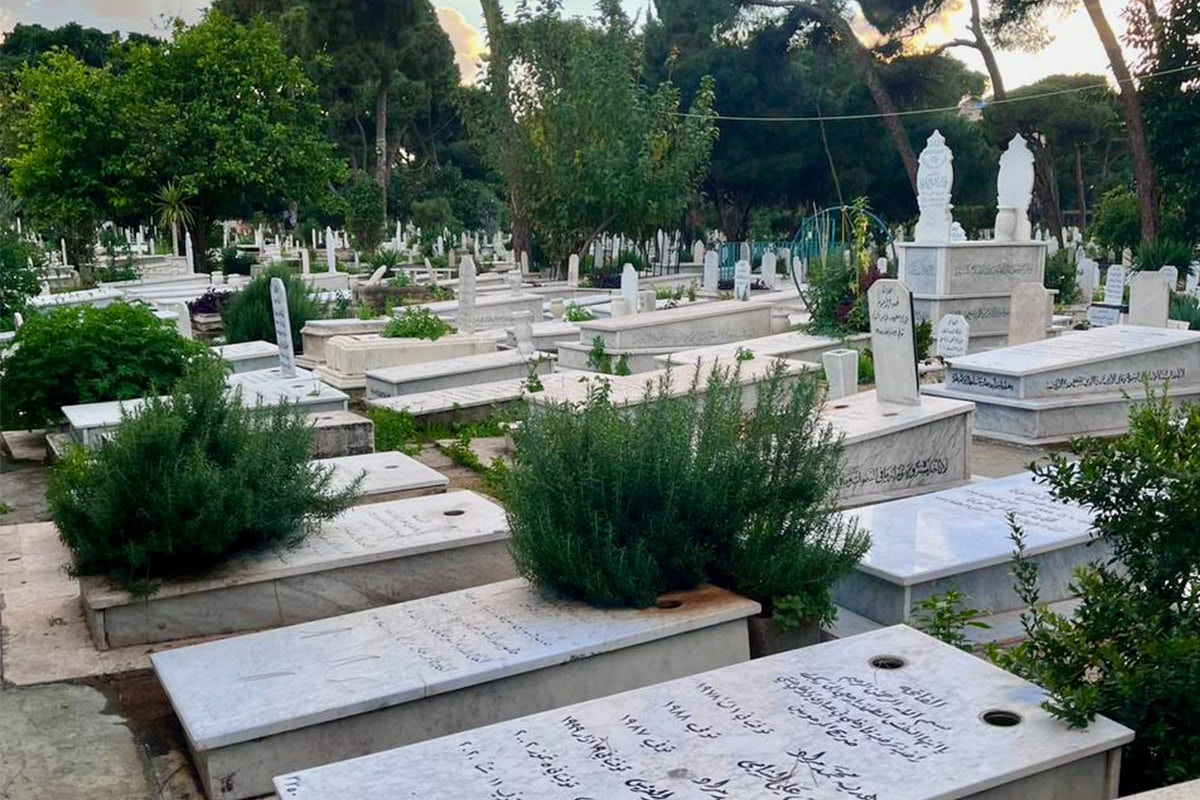Death, Migration and Identity: Comparing Burial Practices Among Refugees and Migrants in Lebanon and Morocco
Nadia Sonneveld, Associate Professor, Van Vollenhoven Institute for Law, Governance and Society (VVI), Leiden Law School, Leiden University
Duaa Nooreddine, Gender-based Violence Focal Point, Caritas Lebanon
Introduction
Death is a significant event in every human’s life. Death and burial practices, intrinsic to cultural and religious identity, stand as pivotal components of societal norms. In this comparative socio-legal study, we explore how migrant deaths are handled in practice in Lebanon and Morocco, two MENA countries that are undergoing a significant transition from historically being emigration-focused to becoming countries for immigration.
With migrants residing on Moroccan and Lebanese soil for longer periods, policymakers in both countries must consider the management of long-term migrants not only in life but also after death–a topic often neglected in academic studies despite the intimate link between death, migration, identity and citizenship.
On the individual level, the proper regulation of death is essential for various legal and financial reasons. It enables the bereaved to claim pensions and inheritances, as well as navigate divorce proceedings. It ensures the appropriate cessation of tax obligations and facilitates remarriage, in addition to the birth registration of any potential new children.
A structured approach to death allows governments to develop comprehensive national health and educational programs. This necessitates accurate population data, including proper registration of death. To prevent clandestine burials, governments also need to regulate burial locations and keep good records of final resting places.
Moreover, death is intrinsically linked to human dignity. Article 1 of the Universal Declaration of Human Rights upholds the inherent dignity of all human beings, regardless of their citizenship status. Ensuring a dignified approach to death and burial holds significance beyond the legal and financial considerations mentioned earlier. It also provides the bereaved with closure and fosters a profound sense of history and continuity. Given the socio-legal approach of our research project, we explore the real-world implementation of the principles of human rights concerning death in two countries facing the dual challenge of accommodating the death and burial practices of their growing migrant populations, while preserving the existing political status quo, in which religion plays a significant role.
Our findings are based on ongoing fieldwork initiated in Lebanon and Morocco in 2021.
Morocco Findings
 Cemetery in Morocco, captured by Nadia Sonneveld
Cemetery in Morocco, captured by Nadia Sonneveld
Interviews and informal participatory conversations with West and Central African migrants in Morocco highlighted the significance of ancestors. The concept of a “good death” extends beyond the passing itself to encompass a proper funeral and burial, preferably alongside ancestors in the village. However, challenges arise in the financial realm, where families may struggle to afford the repatriation of bodies. In such cases, respondents often switch to a religious approach.
Expressing the belief that the land of God is everywhere, many opt for burial in Morocco. This presents other challenges for respondents–a majority of whom come from non-Muslim backgrounds. Given that 99 percent of the Moroccan population formally adheres to Sunni Islam, most cemeteries are Islamic. Although European cemeteries from colonial eras still exist, burial there is difficult due to the expense of Christian burials, involving costs for cemetery plots, coffins, and attire, among other factors, unlike the less costly Muslim burials that offer free burial spots and simple shrouding. Consequently, non-Muslim migrants are often buried as Muslims, underscoring the challenges of maintaining religious identity in death.
Additionally, in the Muslim cemetery, migrants’ graves are often marked with small, numbered stones. Observations showed that these stones are often displaced, and respondents noted that the numbers easily wash away when it rains. Coupled with an inadequate recording of grave locations in the cemetery registers, this situation makes it exceedingly challenging for families to locate the graves of their loved ones in the future, ultimately resulting in the gradual erasure of their historical traces.
It should be noted that families in the countries of origin do not always prioritize maintaining traditional or religious ties. In cases of “bad death,” such as suicide or deaths due to violence, they may willingly relinquish funeral responsibilities. Moreover, for families where religion holds little significance, burying a member in a Muslim cemetery does not present any issues and serves as a more cost-effective solution.
In cases of migrant deaths, the government frequently places the responsibility of arranging and financing funerals on civil society organizations. Hence, West and Central African respondents in Morocco navigate a nuanced interplay between “traditional” and “religious” normative norms, adapting their practices based on evolving circumstances and frequently relying on the support of civil society organizations to ensure dignified burial practices.
Lebanon Findings
 Cemetery in Lebanon, captured by Duaa Nooreddine
Cemetery in Lebanon, captured by Duaa Nooreddine
Lebanon’s burial pathways for refugees are diverse and reflective of the complex socio-religious and political landscapes. In the multi-religious country of Lebanon, it is crucial to note that burial procedures and matters related to death are predominantly regulated by religious legislation. Religious courts wield authority over these aspects and delegate responsibilities to individual municipalities, leading to a varied and inconsistent approach. Similar to the situation in Morocco, municipalities in Lebanon encounter challenges due to underdeveloped practices for supporting the burial of refugees and migrants. Importantly, and in contrast to Morocco, there is minimal involvement from non-governmental organizations (NGOs) or UN partners in facilitating the repatriation of bodies, particularly to Syria. Repatriation, according to the data gathered, is the preferred burial option; however, it is also the most expensive and complicated approach. Accordingly, when repatriation is not possible, there are three primary alternative approaches resorted to:
A. Contacting Religious Courts
Many of the respondents were Syrian refugees, predominantly Sunni Muslims. When a Syrian refugee passes away, they often turn to the Sunni court (Dar Al Fatwa), which connects them with Sheikhs responsible for facilitating burial arrangements. Most of these burial arrangements were in predominantly Sunni regions, including Tripoli, Saida and regions in North Lebanon. The family will not be responsible for the burial plot; nonetheless, they will need to bear the costs associated with transporting the body to the current region and covering the burial expenses. This includes payment for the individual tasked with digging the grave and assisting with the burial process, which is often considered an extra financial burden that would sometimes lead families to resort to borrowing money. In addition, none of the respondents shared that they had received a death certificate.
B. Utilising Political Party Connections
Syrians with affiliations to political parties can expedite burials, frequently without legal documentation, in Lebanese cemeteries during nighttime. These practices are particularly linked to Lebanon’s current situation, where each political party oversees a specific region, wielding control without adherence to established government laws. For instance, Mariam, who had lived in Beirut and lacked the means to cover burial expenses for her infant daughter, sought assistance from Lebanese neighbors connected to local political parties. The political party in charge facilitated the clandestine burial of her daughter in a Lebanese cemetery without the need for legal documentation. While it relieved Mariam from entering into difficult and costly administrative procedures, the procedure raised legal and security implications.
C. Use of Lands in Bekaa
Some lands in Lebanon’s Bekaa governorate, owned by a prosperous Syrian family, serve as burial spaces for Syrians. While some Syrians close to these regions were able to bury their dead, the distance from the capital, where most interviewees reside, is considerable. Transporting the body to these locations incurs significant costs, posing a challenge for many. While transporting the body to their homeland may initially appear logical, especially when considering the distance to Bekaa, it is essential to acknowledge that the cost of transporting a body to Syria is significantly higher. Furthermore, the process is more complicated due to the necessity of obtaining various official documents, including hospital documents and death certificates. In contrast, there is no requirement for official documents in Bekaa, making the process comparatively easier.
Conclusion
With 99 percent of its citizens adhering to Sunni Islam, Morocco is a religiously homogeneous country, whereas religious diversity is an inherent characteristic of Lebanon. Despite these differences, in both countries burial practices of migrants contribute to a preservation of the political status quo.
In Morocco, non-Muslim migrants are often buried as Muslims. This reinforces the portrayal of Morocco as a country where the King is the leader of the (Sunni Muslim) believers. In many cases, migrants can only fulfill their burial wishes when financial support becomes available. Civil society organizations play an important role in making these resources accessible.
In Lebanon, political authority is divided among various political parties, with each party overseeing a specific geographical area. The options for burials for Syrian families hinge on their connections within the Lebanese community or respective political parties, reflecting the decentralized nature of power. This decentralized approach leads to a lack of uniformity in the handling of the death of each Syrian refugee. In contrast to Morocco, Lebanon has a less homogenous response and centralized authority, in addition to having almost no involvement of civil society.
Our comparative study illuminates that burial practices among refugees and migrants in Morocco and Lebanon are multifaceted and molded by cultural, religious and governmental influences. Understanding these dynamics is imperative for developing nuanced policies and support systems that respect the diverse needs of individuals grappling with the challenges of death and burial in unfamiliar environments.
This comparative study is part of the research project Living on the Other Side: A Multidisciplinary Analysis of Migration and Family Law in Morocco. The project investigates how migrants deal with the formal and informal aspects of major life events, such as marriage, birth and death. The project is sponsored by the Dutch Research Council (NWO).
Nadia Sonneveld is an associate professor at the Van Vollenhoven Institute for Law, Governance and Society, Leiden Law School, Leiden University, the Netherlands. She has an academic background in Anthropology, Arabic, and Law. In her research, she focuses on gender, law and migration in the Middle East and North Africa, with a particular focus on Egypt and Morocco.
Duaa Nooreddine is the Gender-Based Violence Capacity Building Associate at International Medical Corps Lebanon. She holds a Bachelor’s degree in Social Work and is pursuing a Master’s degree in Migration Studies at the Lebanese American University. Her work is focused on refugee and migrant communities within the context of Lebanon